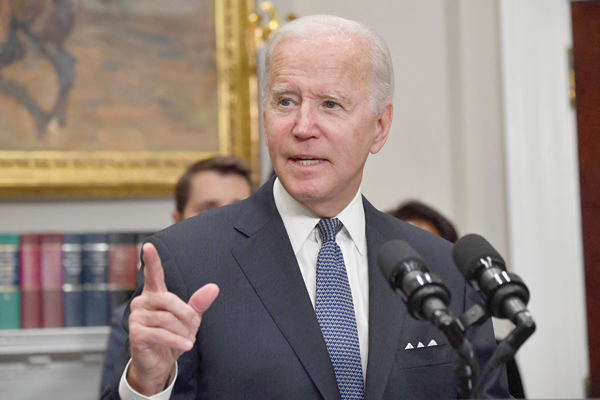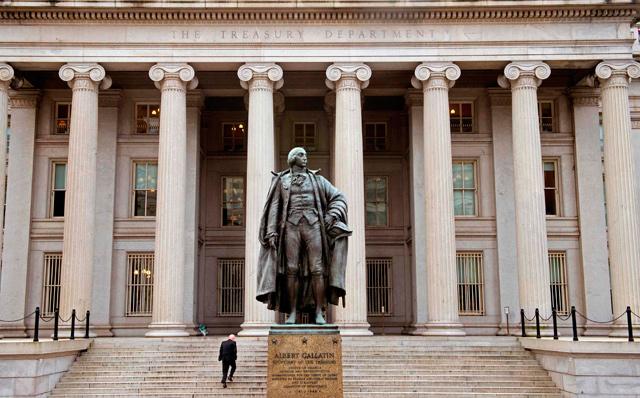You are here
US budget deficit drops by half in 2022 on pandemic recovery
By AFP - Oct 22,2022 - Last updated at Oct 22,2022

US President Joe Biden speaks about the administration's deficit reduction in the Roosevelt Room of the White House in Washington, DC, on Friday (AFP photo)
WASHINGTON — The US budget deficit fell by half in the past year to $1.4 trillion on the back of a pandemic recovery and as relief spending eased, the government said on Friday.
COVID-related spending on things like unemployment insurance and other programmes have declined following a recovery in the world's biggest economy from the virus outbreak, with businesses returning to normal.
The drop in the budget deficit marks the "largest one-year decrease", said the Treasury Department and White House budget office on Friday.
This was helped by higher individual and corporation tax collections, bolstered by employment growth, with tax revenues for the fiscal year ended September 30 surging a record $850 billion from 2021.
President Joe Biden hailed the big drop as evidence of a resurgent economy just three weeks ahead of November's crucial midterm elections to decide control of Congress.
Hailing the "largest ever decline in the federal deficit", Biden called the development "further proof that we're rebuilding the economy".
The development, he said, was part of "the good news on the economy" that he predicted would help Democrats climb back in the polls, which currently show Republicans poised for victory.
Treasury Secretary Janet Yellen, in a statement citing the American Rescue Plan stimulus package, said "today's joint budget statement provides further evidence of our historic economic recovery".
In a statement, officials also added that the US has "more than recovered all of the jobs lost during the pandemic".
The economy added more than 10 million jobs since early 2021, while unemployment returned to its pre-pandemic level.
The figures for the latest fiscal year showed government outlays dipped $550 billion to $6.3 trillion, in part reflecting reductions in COVID-19 related spending.
But spending for categories such as student loans increased, the report added.
This was the first fall in outlays since 2013, Treasury officials told reporters.
Loan forgiveness
The overall drop in the deficit came after Biden announced plans to forgive part of the country's massive student debt burden, a topic of controversy between Democrats and Republicans.
Republicans accuse Biden of wasting money on the measure, arguing that public funds could be used more effectively.
Loan modifications had a $430 billion impact in September, with a Treasury official acknowledging that loan forgiveness was one of the primary reasons for the increase.
But the department does not expect to see "similar large modifications" in the future unless there were further changes to policy moving forward.
In the latest fiscal year, federal borrowing rose by $2 trillion to $24.3 trillion, still close to the size of the world's biggest economy, data showed.
With soaring inflation bringing a sharp rise in borrowing costs, interest on the public debt came in at $36.6 billion higher than estimated, the Treasury Department said.
The Federal Reserve has raised its benchmark lending rate several times this year to cool surging prices.
In a breakdown, the report on Friday also showed that individuals paid $2.6 trillion in taxes and those from corporations totaled $425 billion.
The Health and Human Services Department spent $1.6 trillion while the Defence Department spent $727 billion and foreign aid came up to an estimated $24.6 billion, the report said.
Related Articles
The United States on Wednesday renewed a warning that Europe risks falling into a downward spiral of falling wages and prices, saying recent actions by the European Central Bank (ECB) may not be enough to ward off deflation.
WASHINGTON — The US budget deficit surged 218 per cent to a record $3.1 trillion in the fiscal year that ended on September 30 due to a mass
WASHINGTON — America's budget deficit rose to nearly $1 trillion in the 2019 fiscal year as government borrowing swelled, the US Treasury sa


















